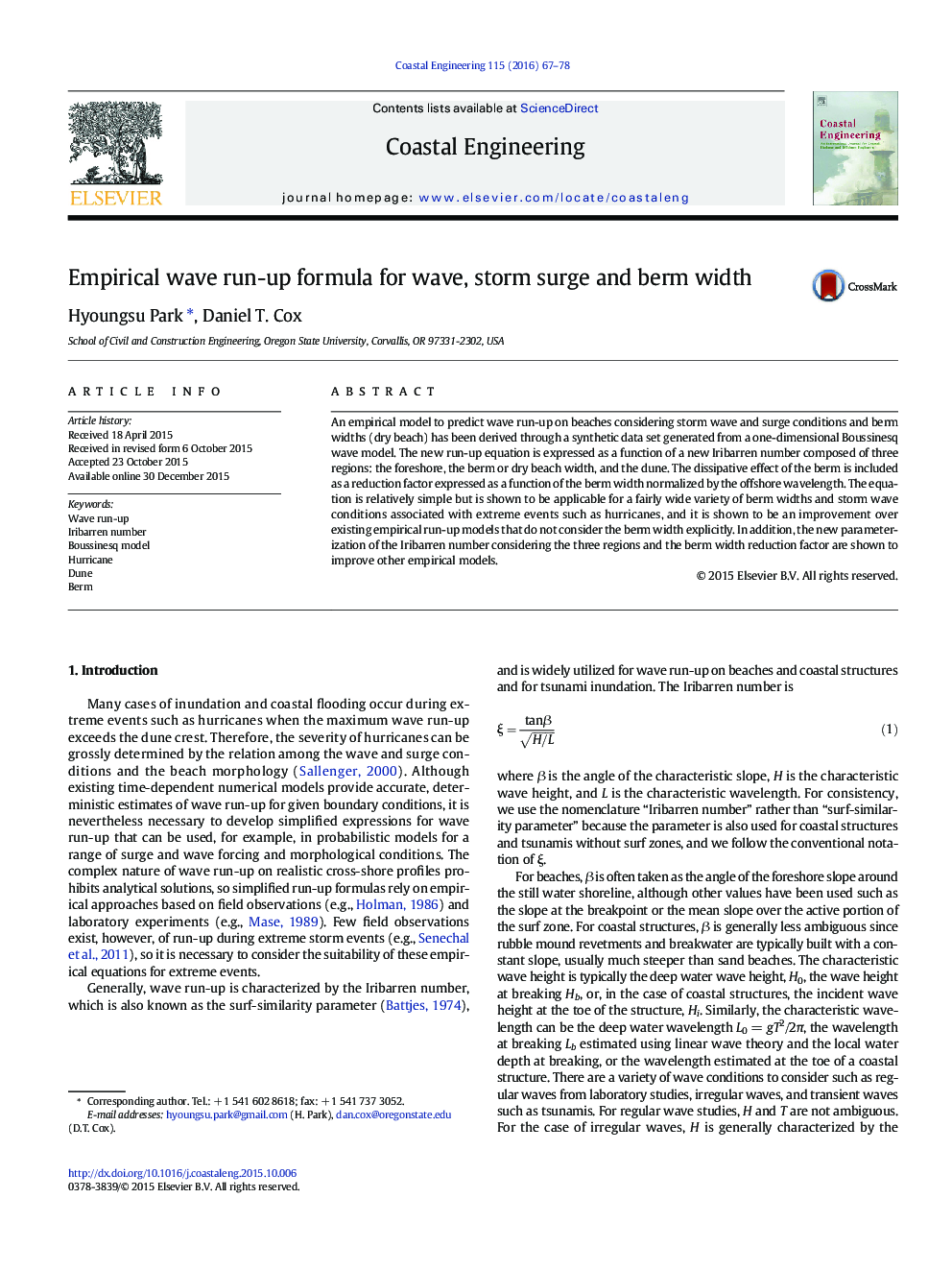| Article ID | Journal | Published Year | Pages | File Type |
|---|---|---|---|---|
| 1720552 | Coastal Engineering | 2016 | 12 Pages |
•This study highlights the role of the berm width in affecting wave run-up during extreme surge events and the limitations of existing empirical approaches to predict run-up in these conditions.•In the absence of suitable field or laboratory observations under extreme conditions, we develop a synthetic data set using a time-dependent Boussinesq wave model over an idealized cross-shore profile based on observed dune–berm–foreshore systems.•We introduce a new run-up model parameterized using a modified the Iribarren number (termed “run-up Iribarren number” in our manuscript) to account for the variation in slope from the foreshore, berm and dune.•We also introduce a “berm reduction factor” similar to reduction factors that have been used successfully for run-up on coastal structures.•We show that our new run-up model can account for the effect of the berm under extreme waves better than several existing models and improve the existing run-up model of Stockdon et al. (2006) when applying our concepts of a “run-up Iribarren number” and berm reduction factor.
An empirical model to predict wave run-up on beaches considering storm wave and surge conditions and berm widths (dry beach) has been derived through a synthetic data set generated from a one-dimensional Boussinesq wave model. The new run-up equation is expressed as a function of a new Iribarren number composed of three regions: the foreshore, the berm or dry beach width, and the dune. The dissipative effect of the berm is included as a reduction factor expressed as a function of the berm width normalized by the offshore wavelength. The equation is relatively simple but is shown to be applicable for a fairly wide variety of berm widths and storm wave conditions associated with extreme events such as hurricanes, and it is shown to be an improvement over existing empirical run-up models that do not consider the berm width explicitly. In addition, the new parameterization of the Iribarren number considering the three regions and the berm width reduction factor are shown to improve other empirical models.
